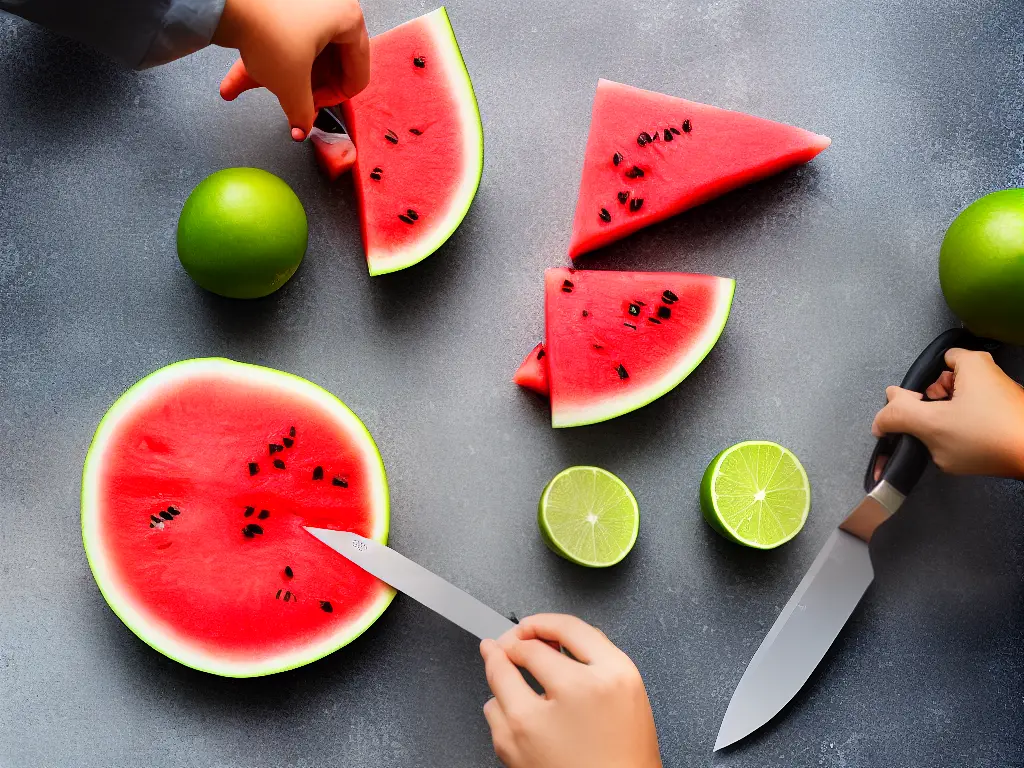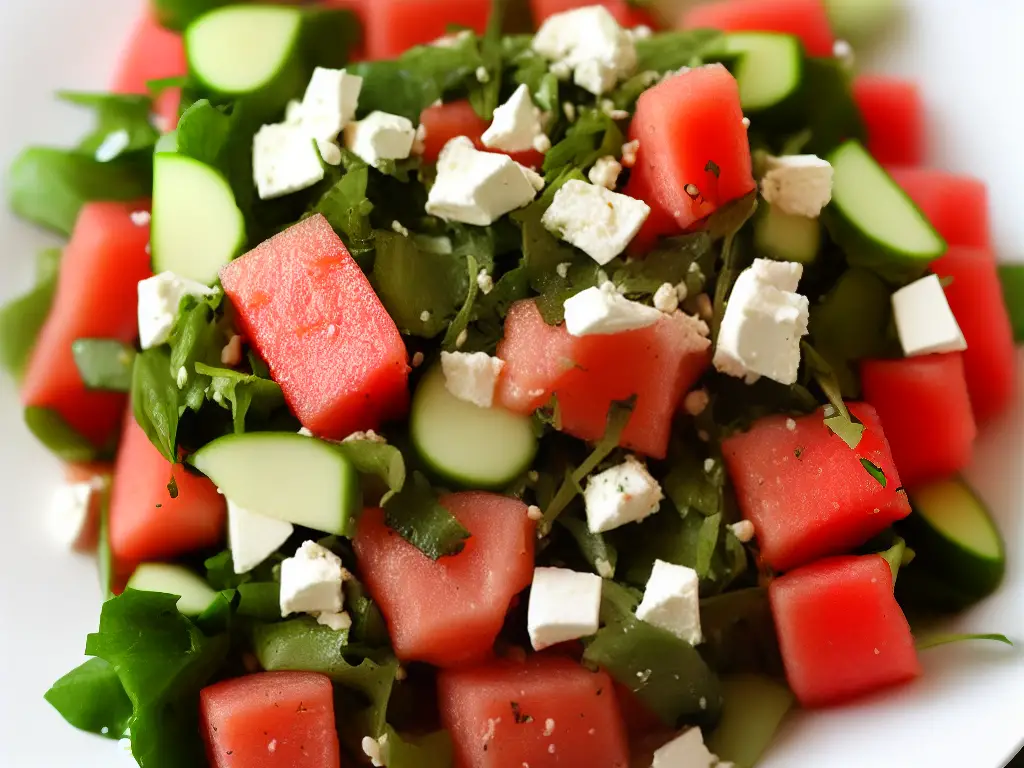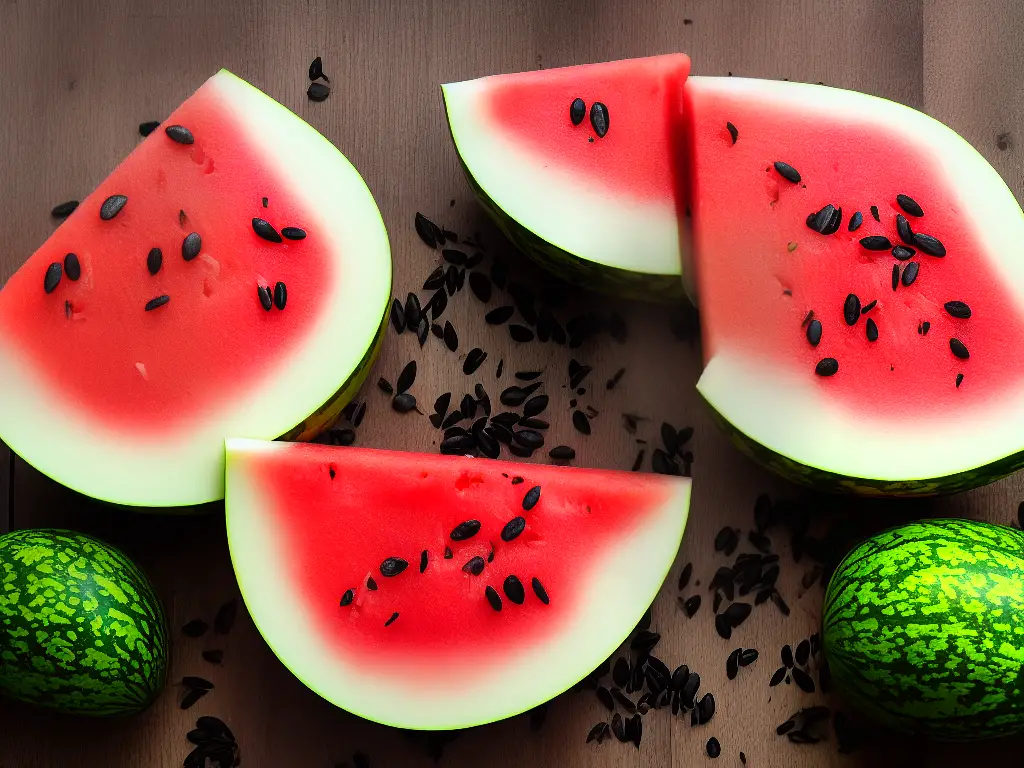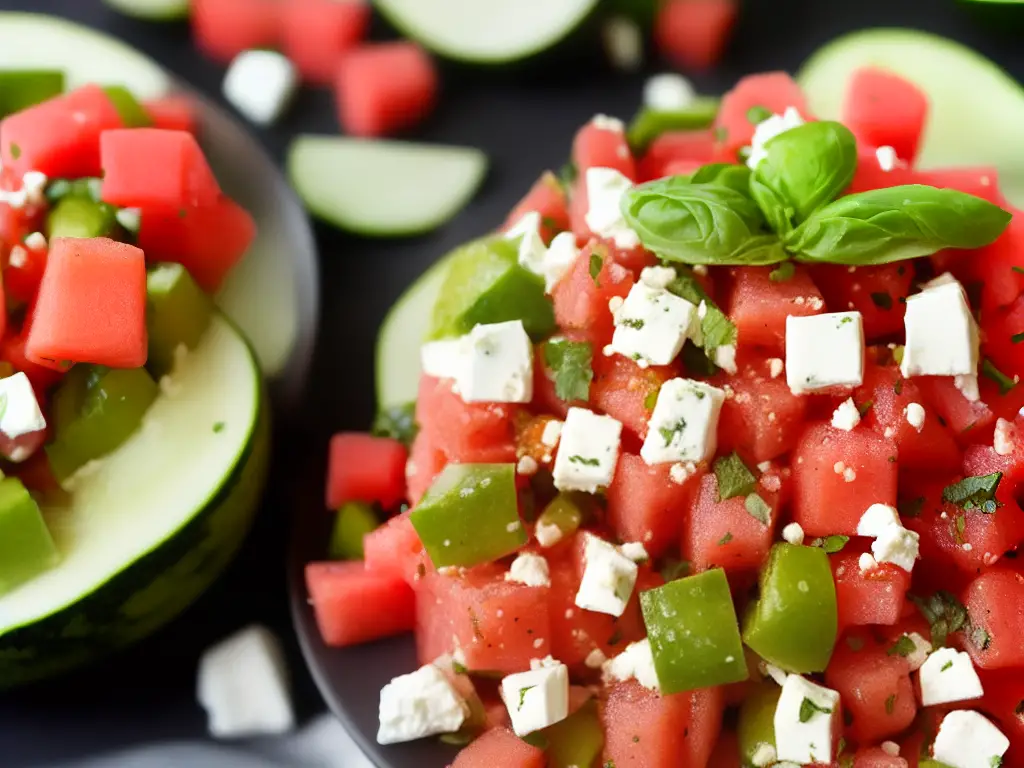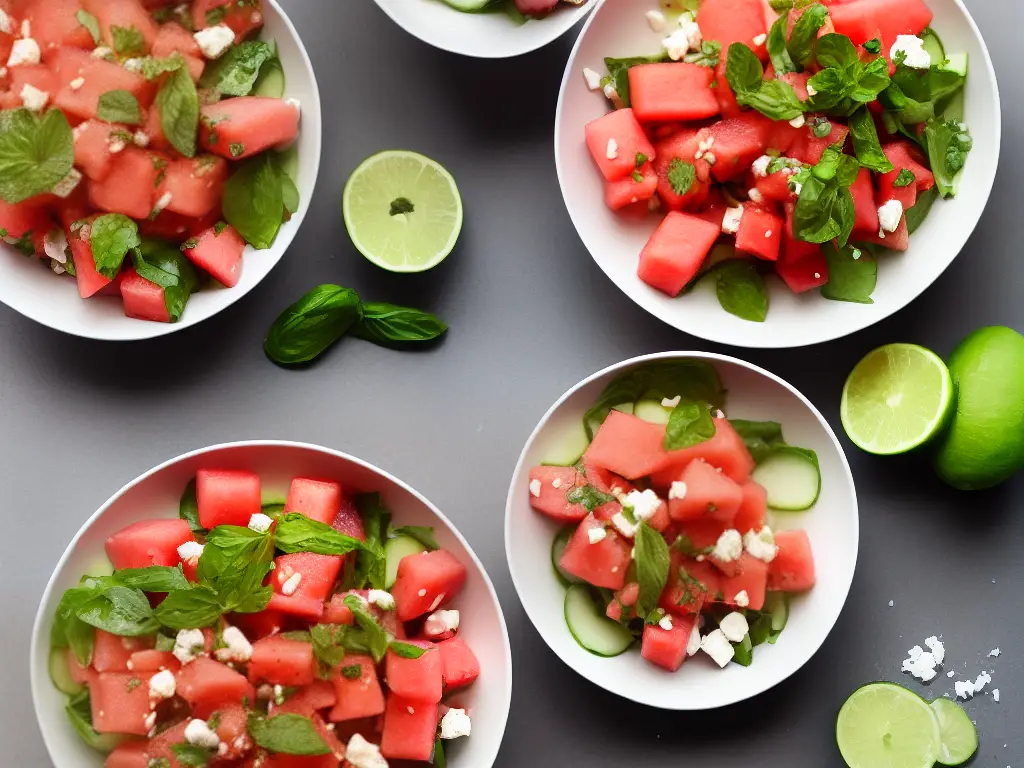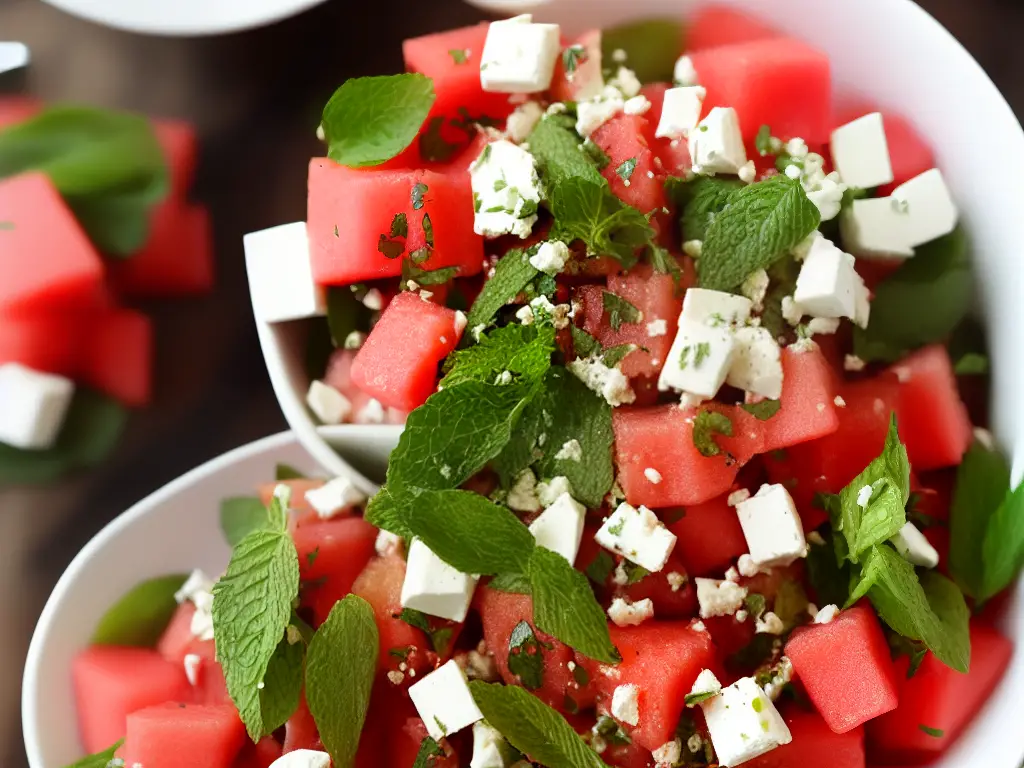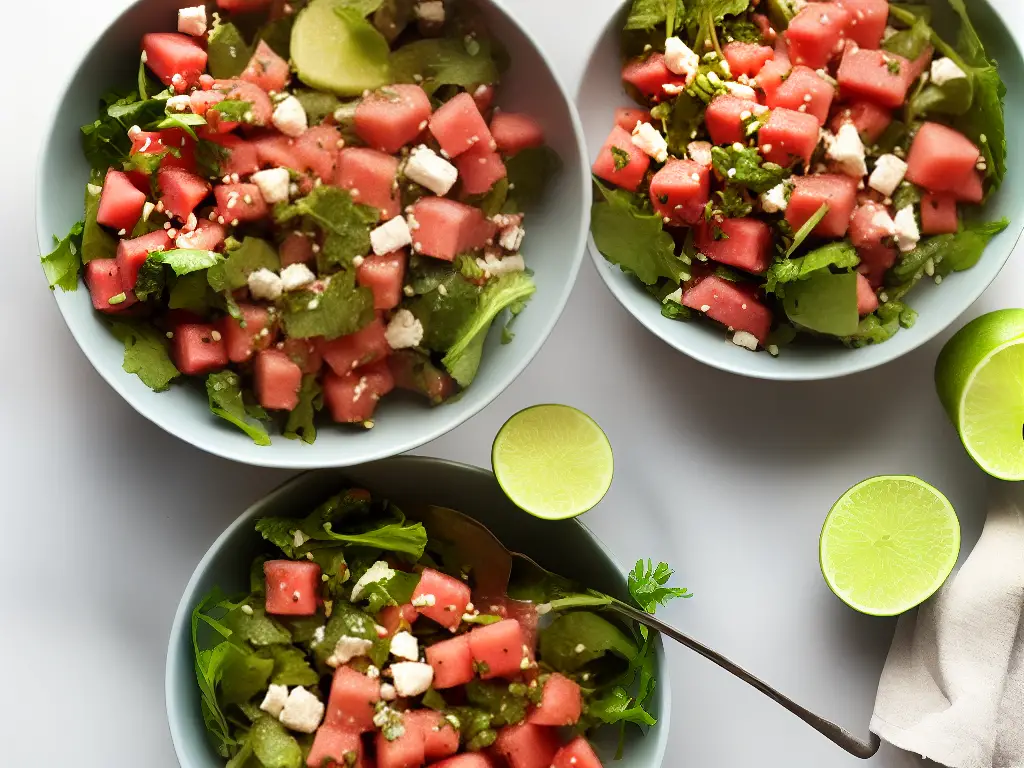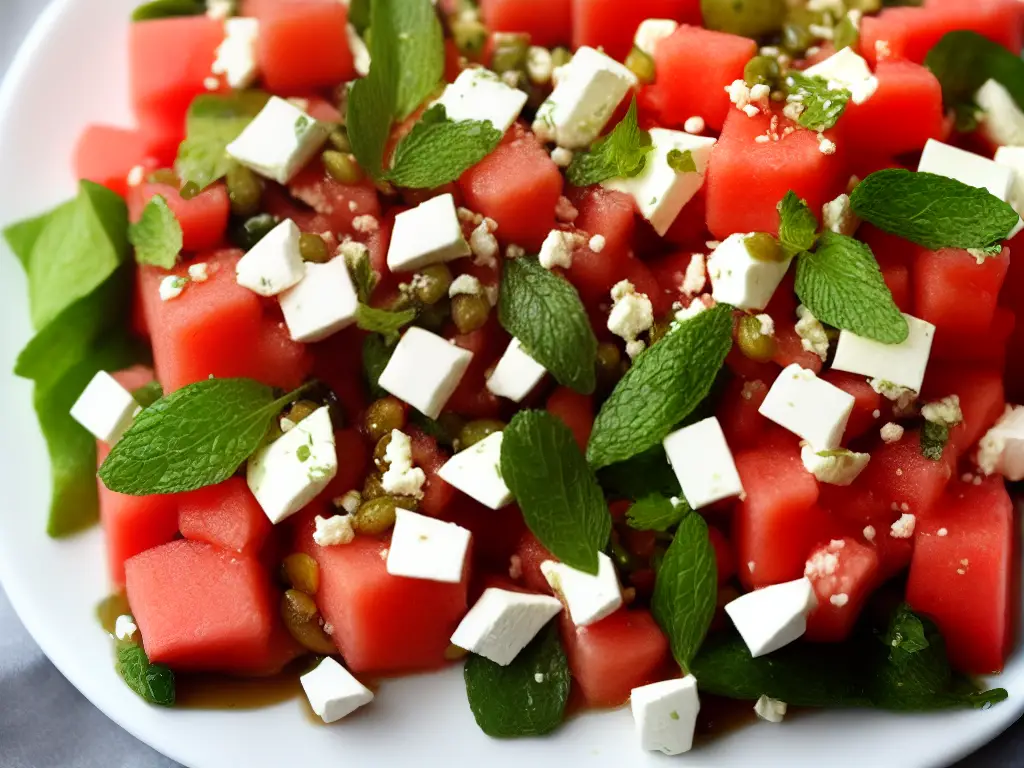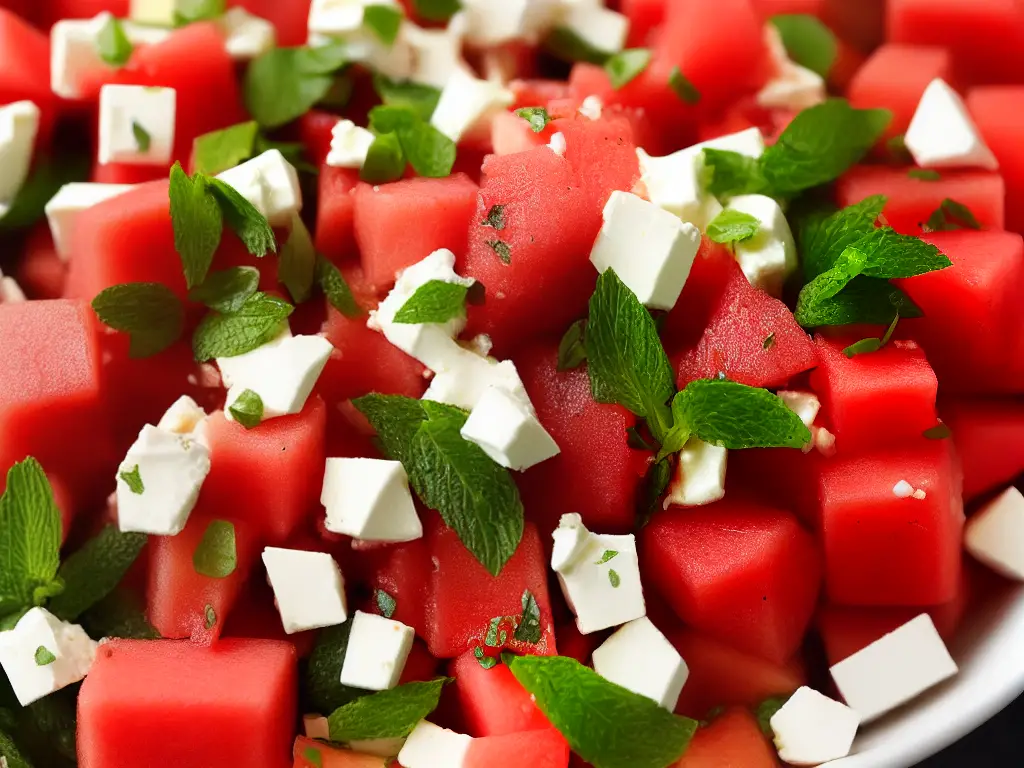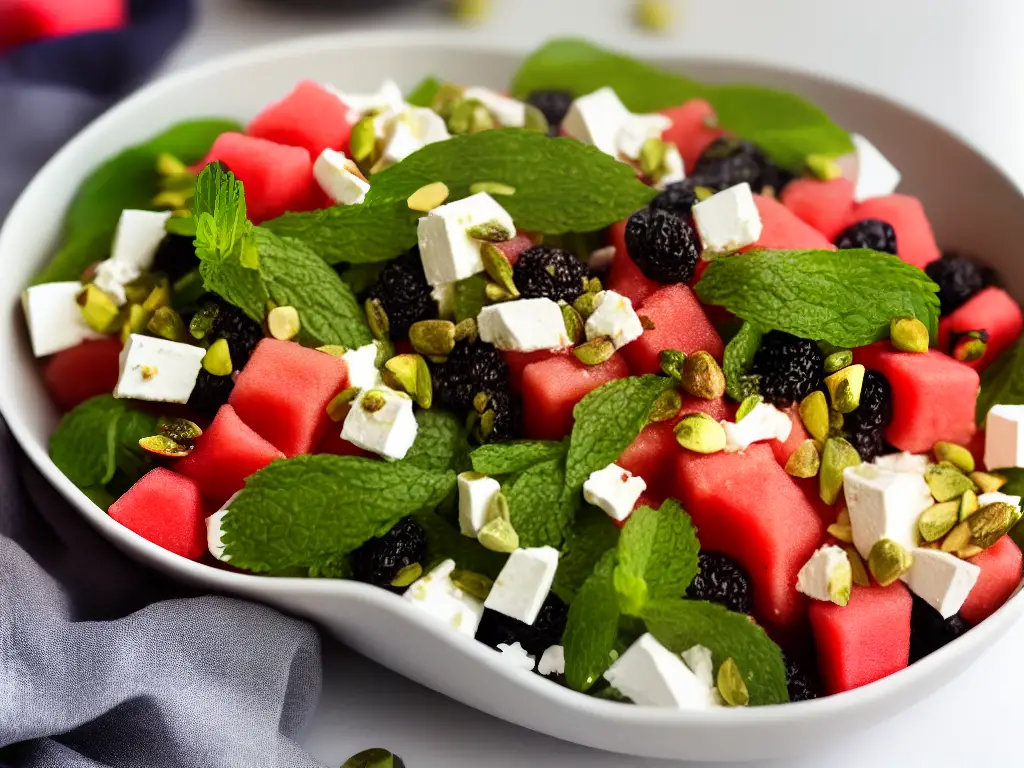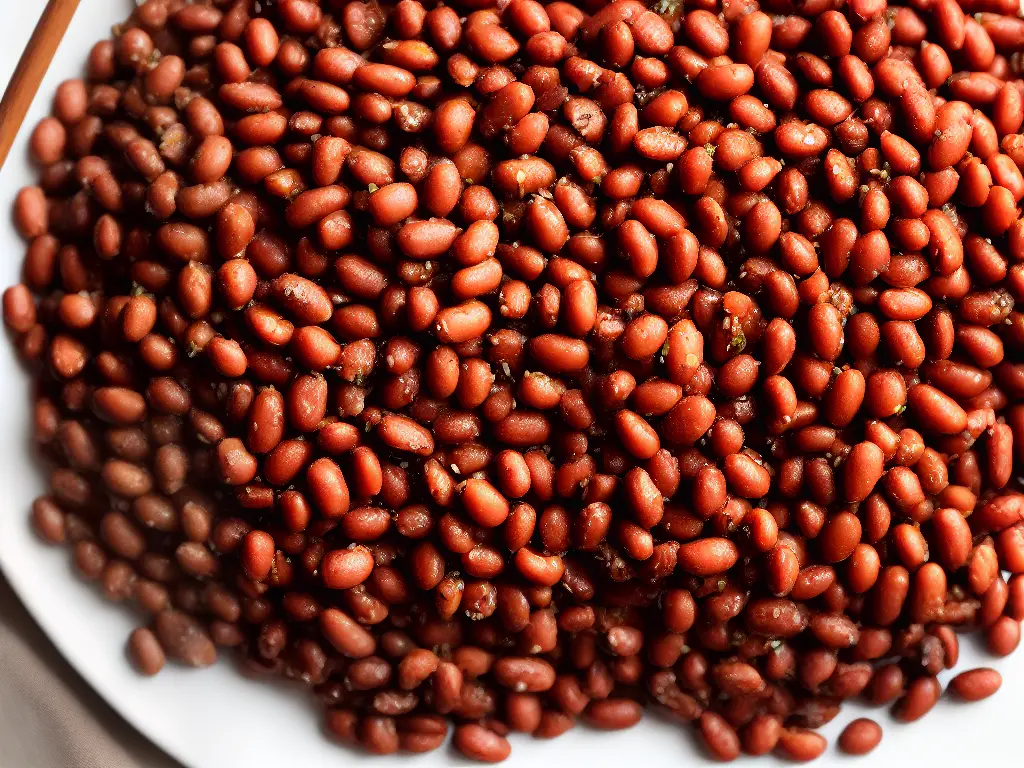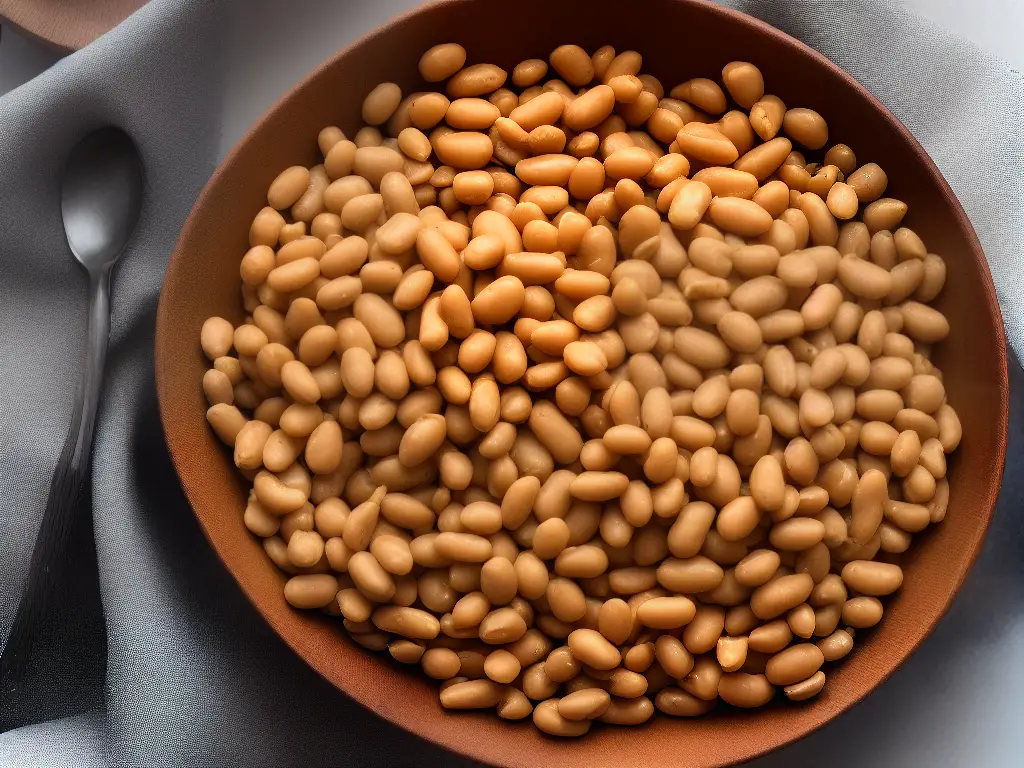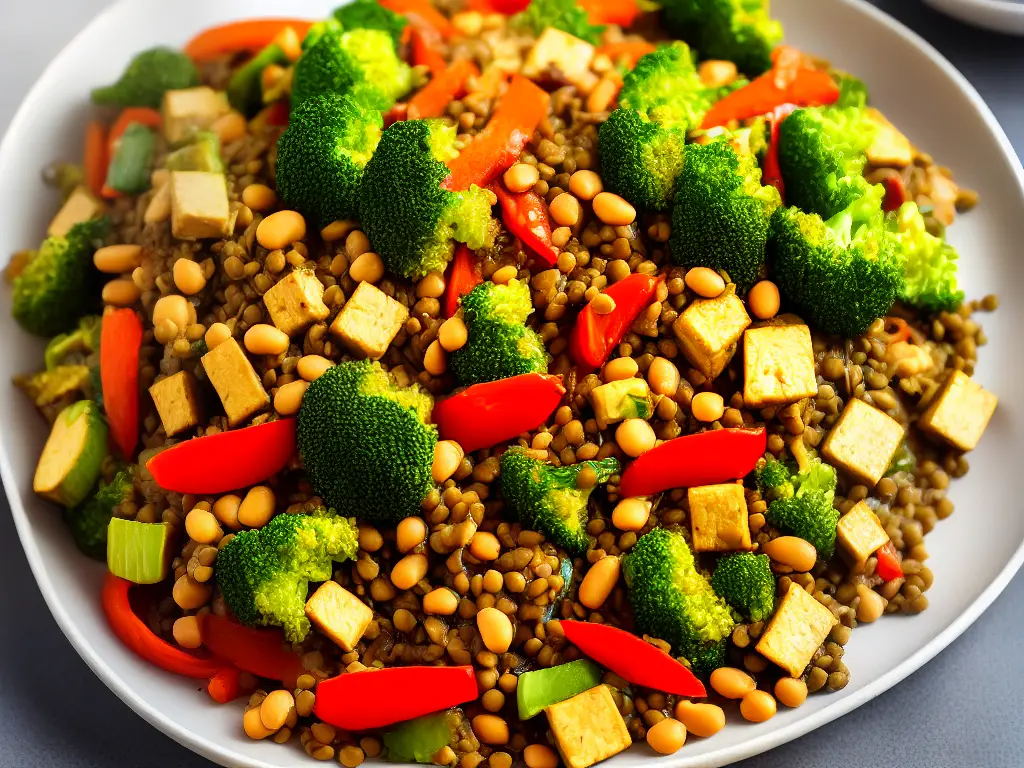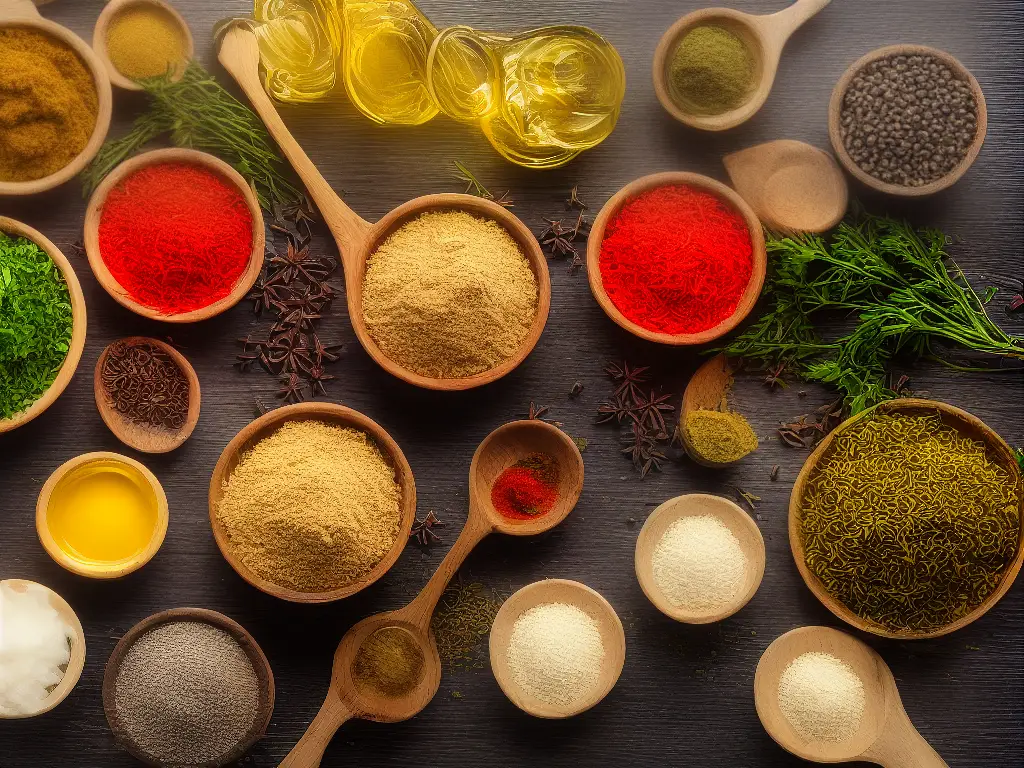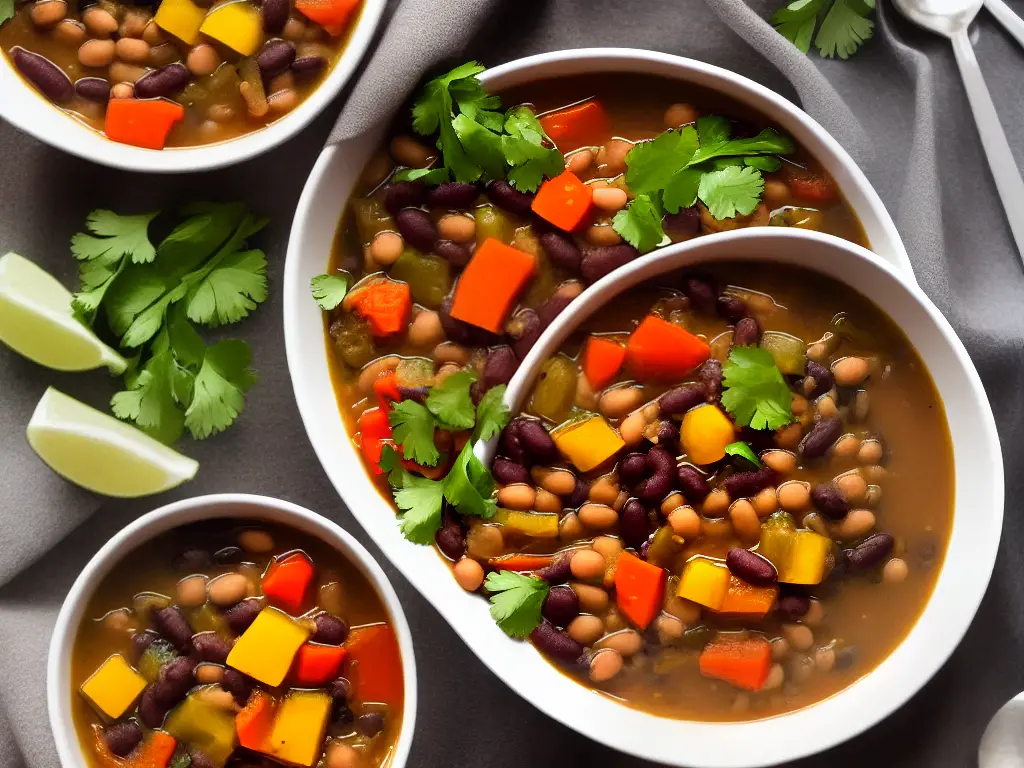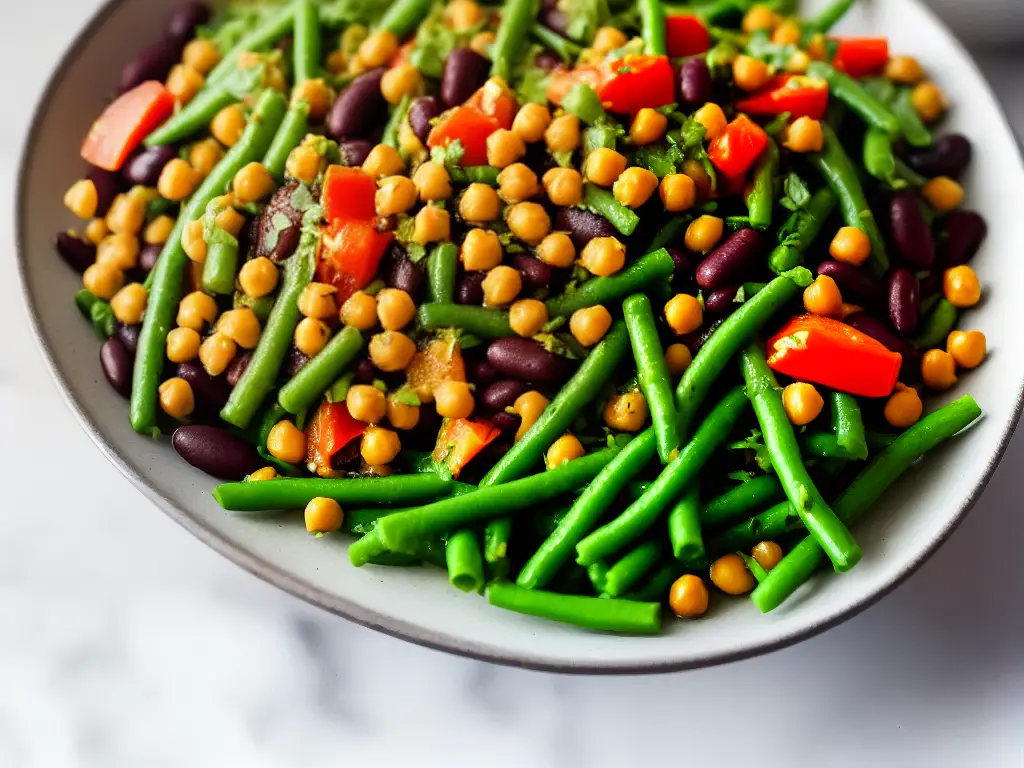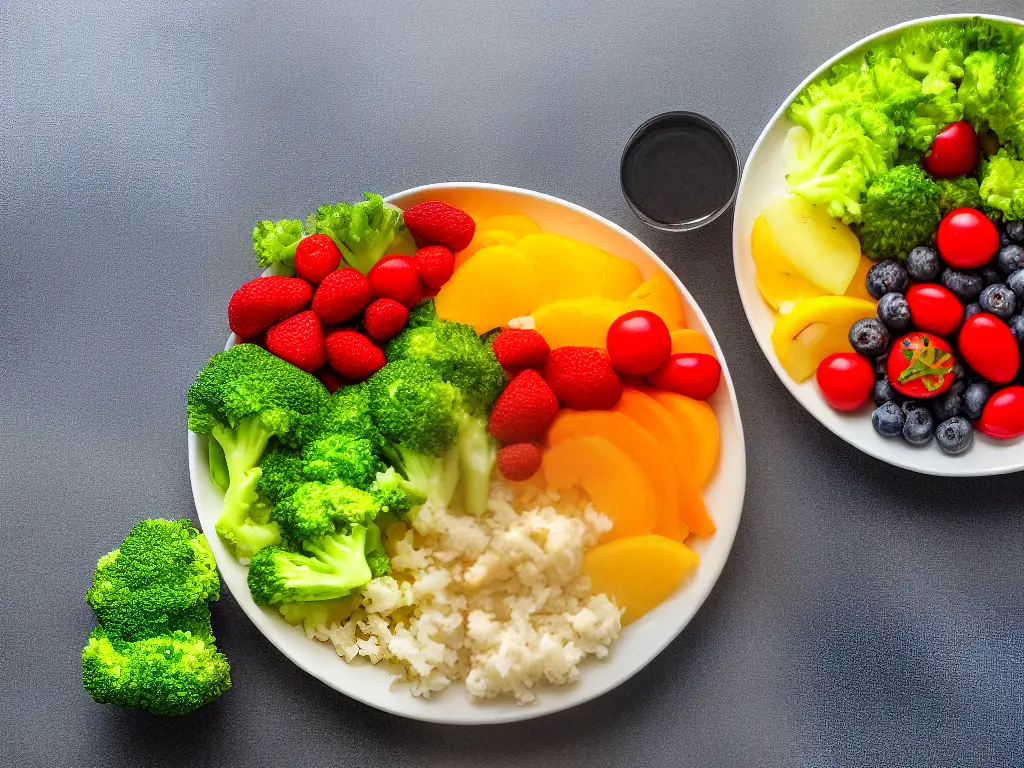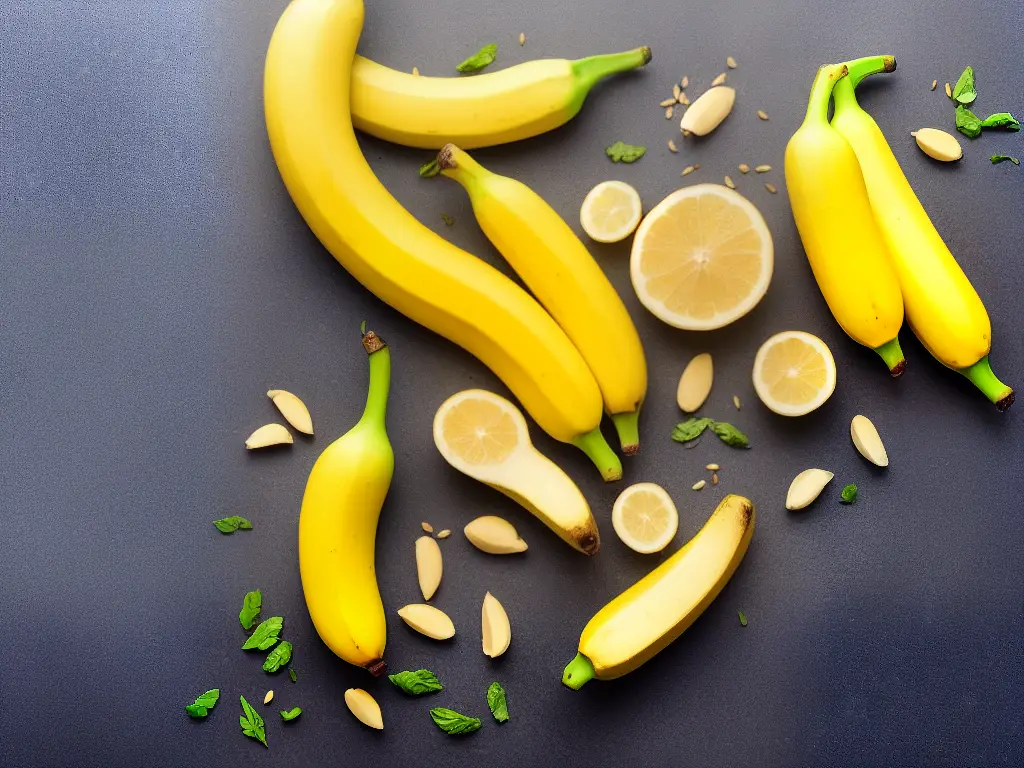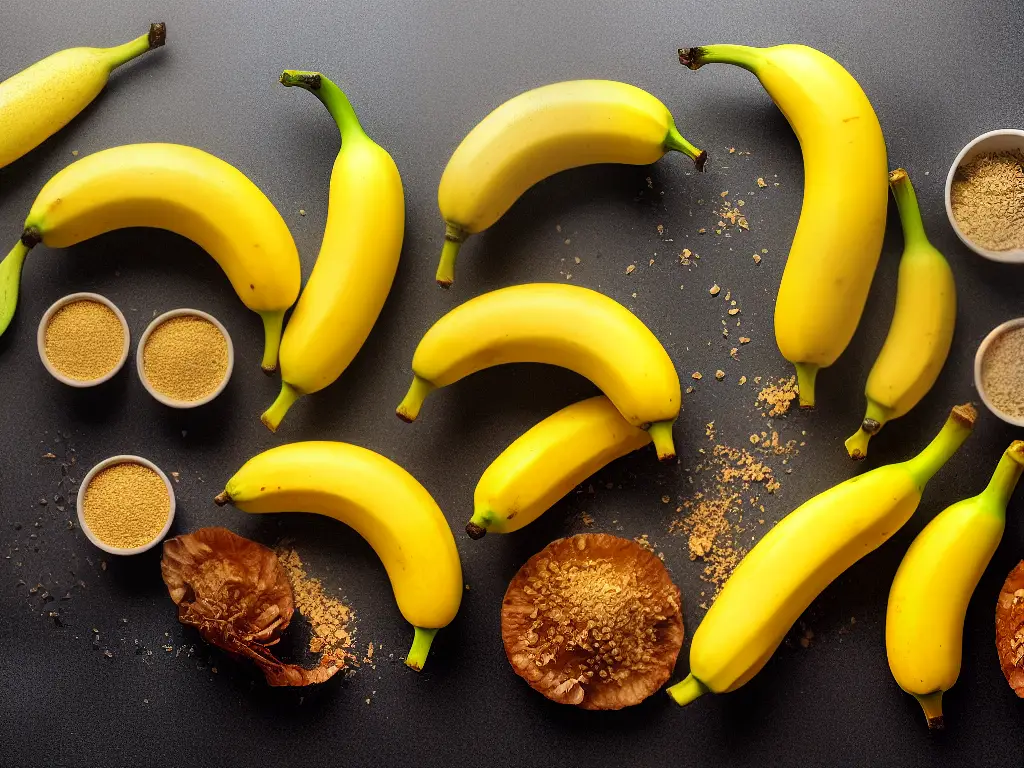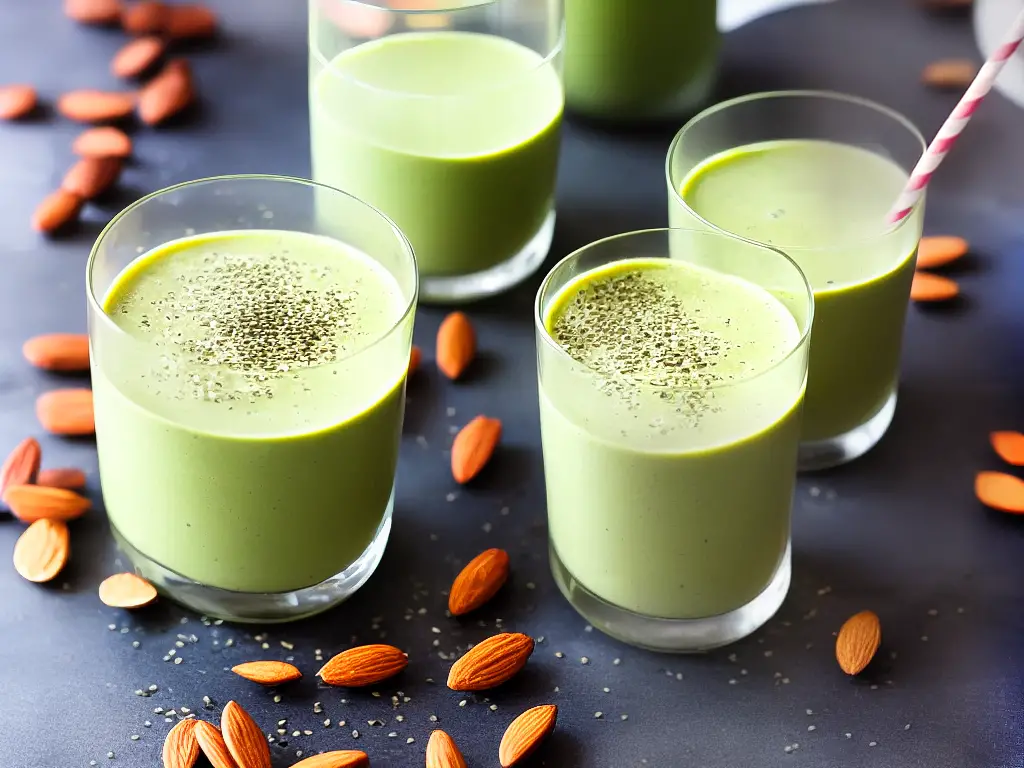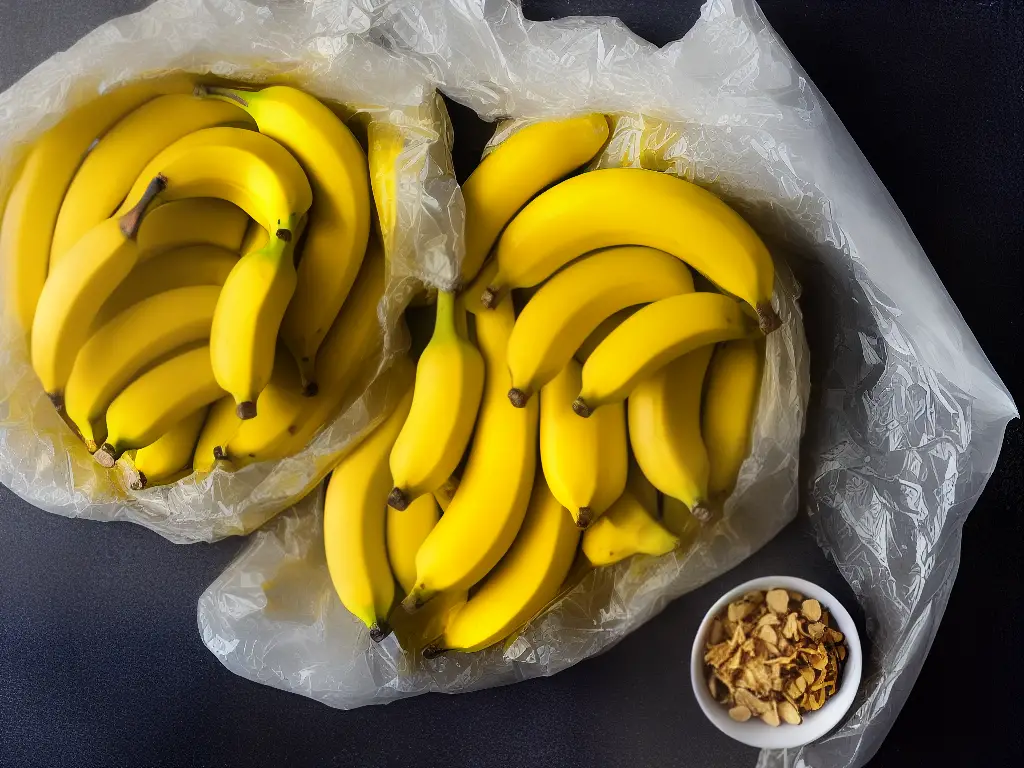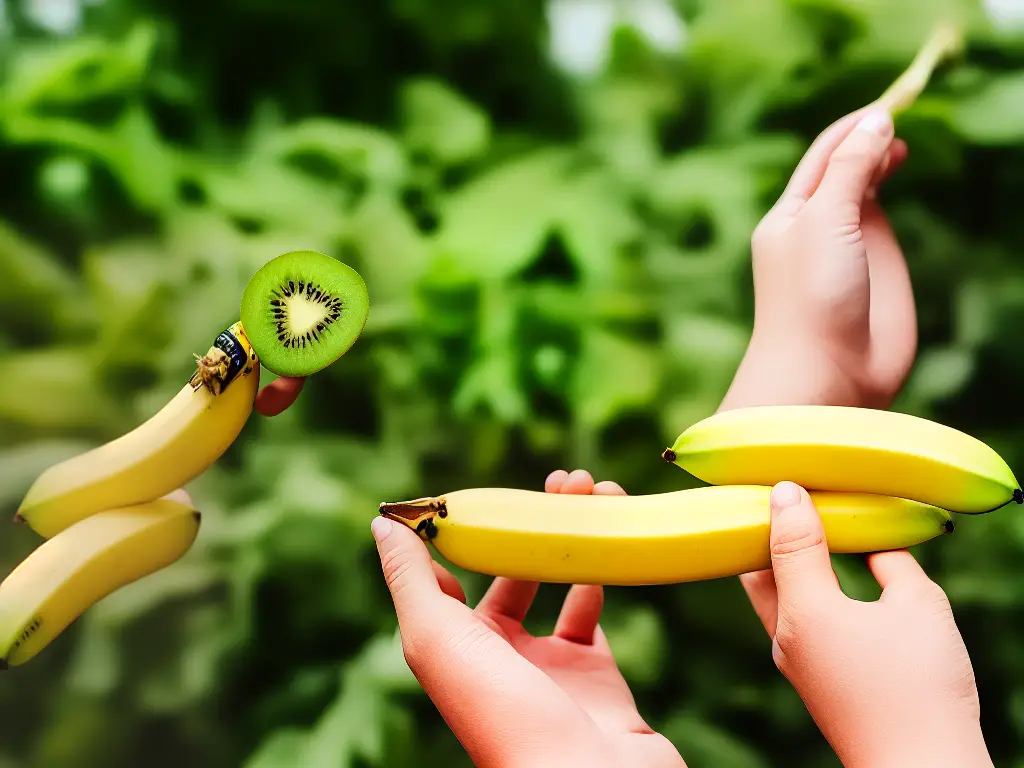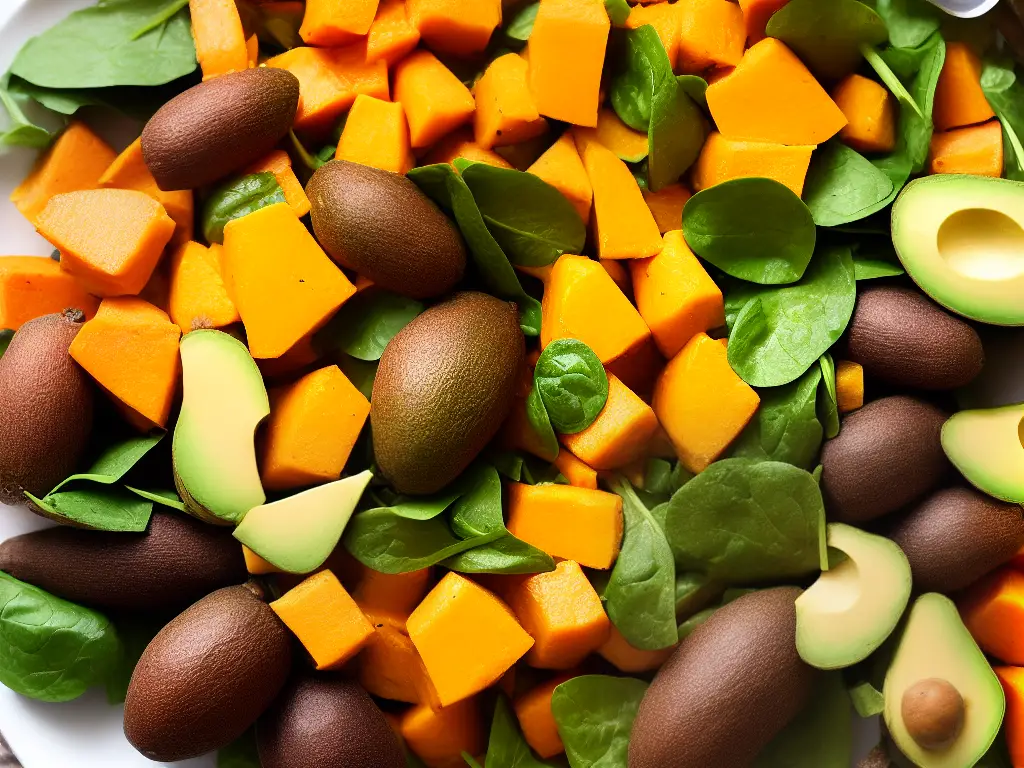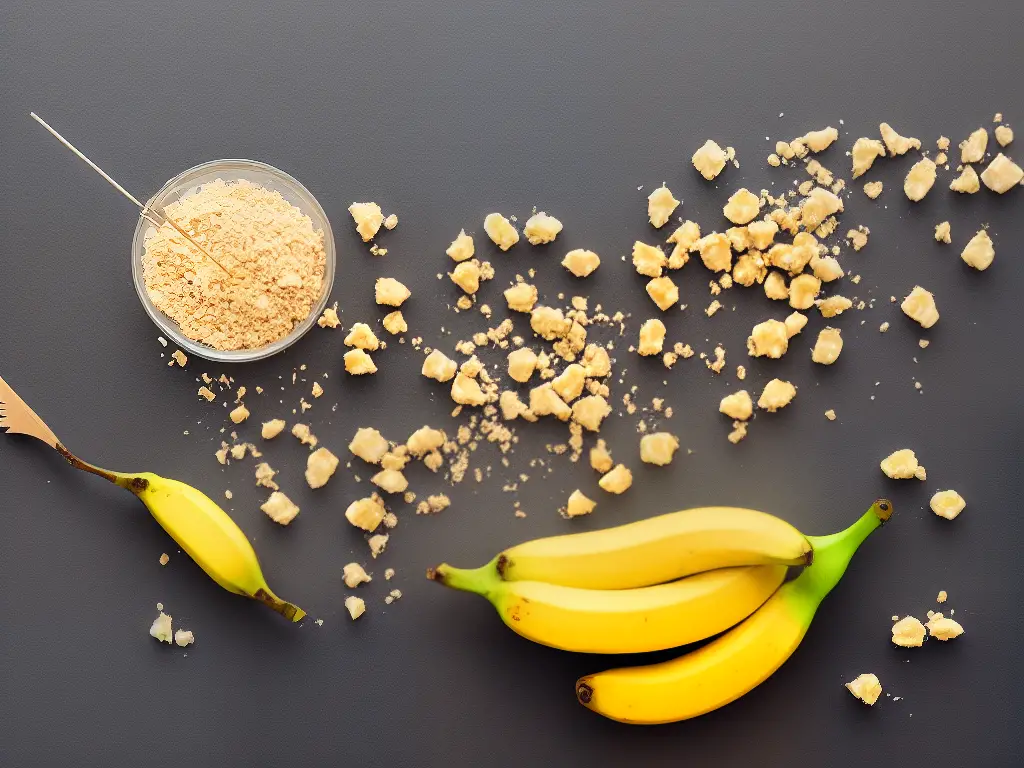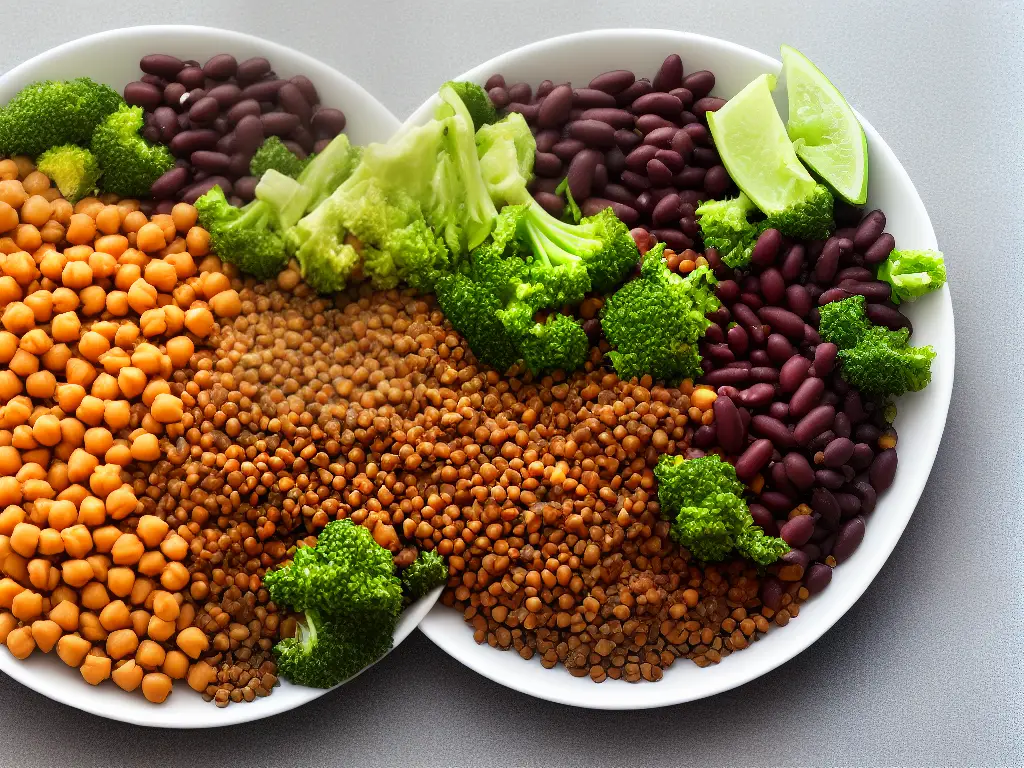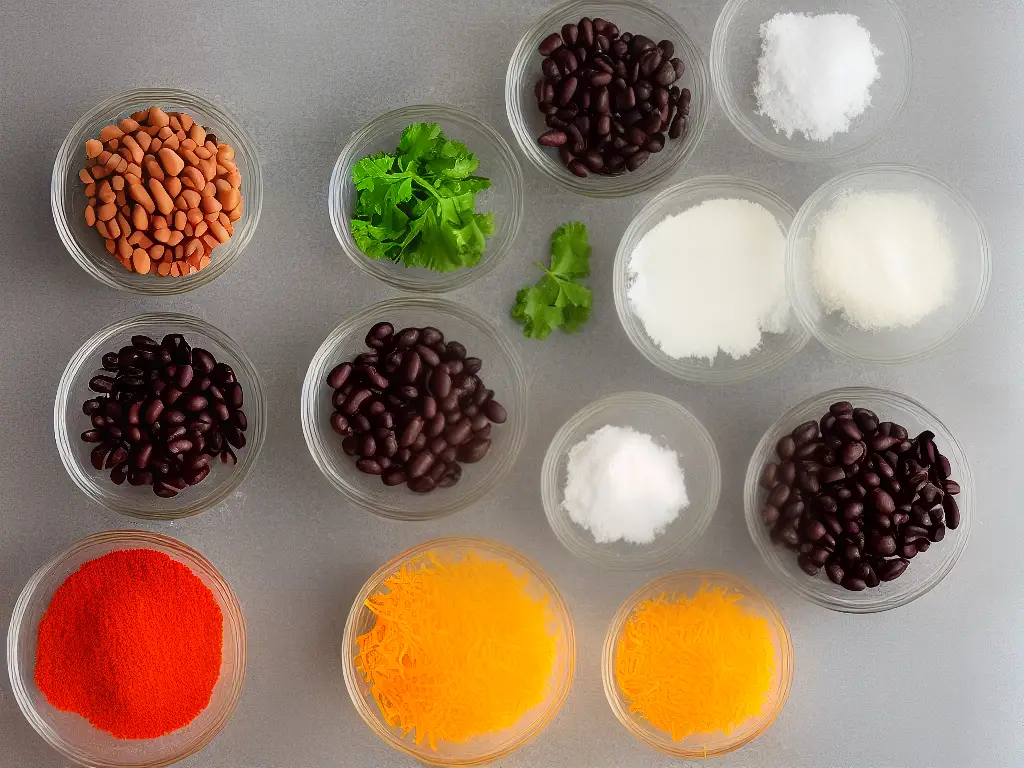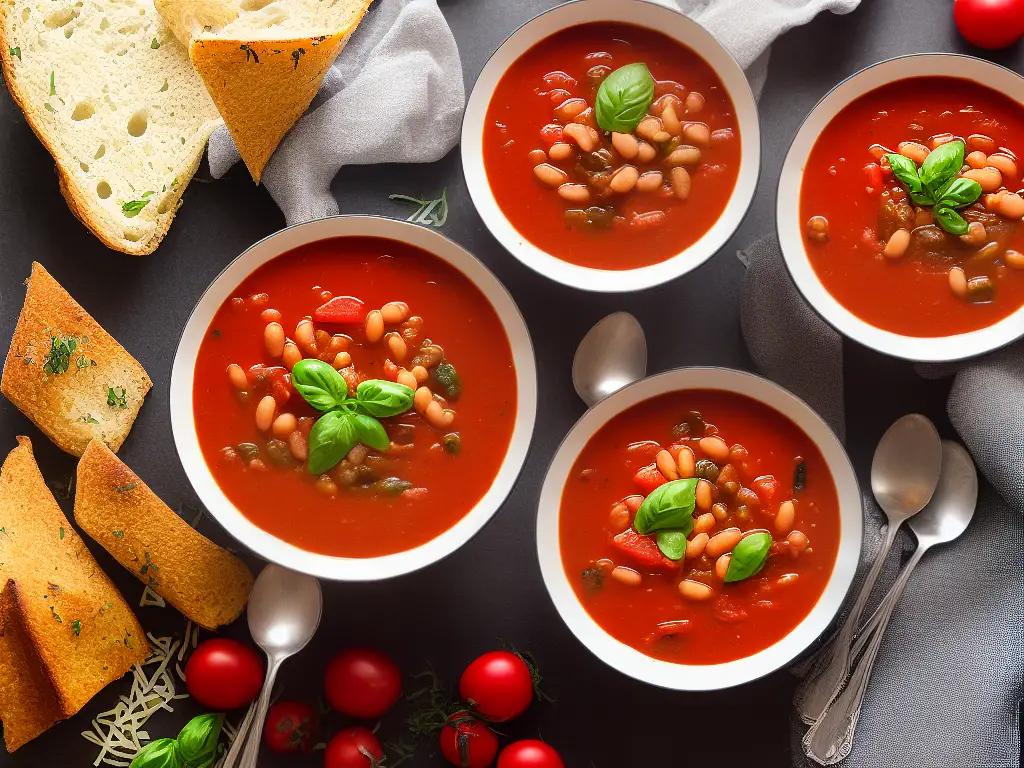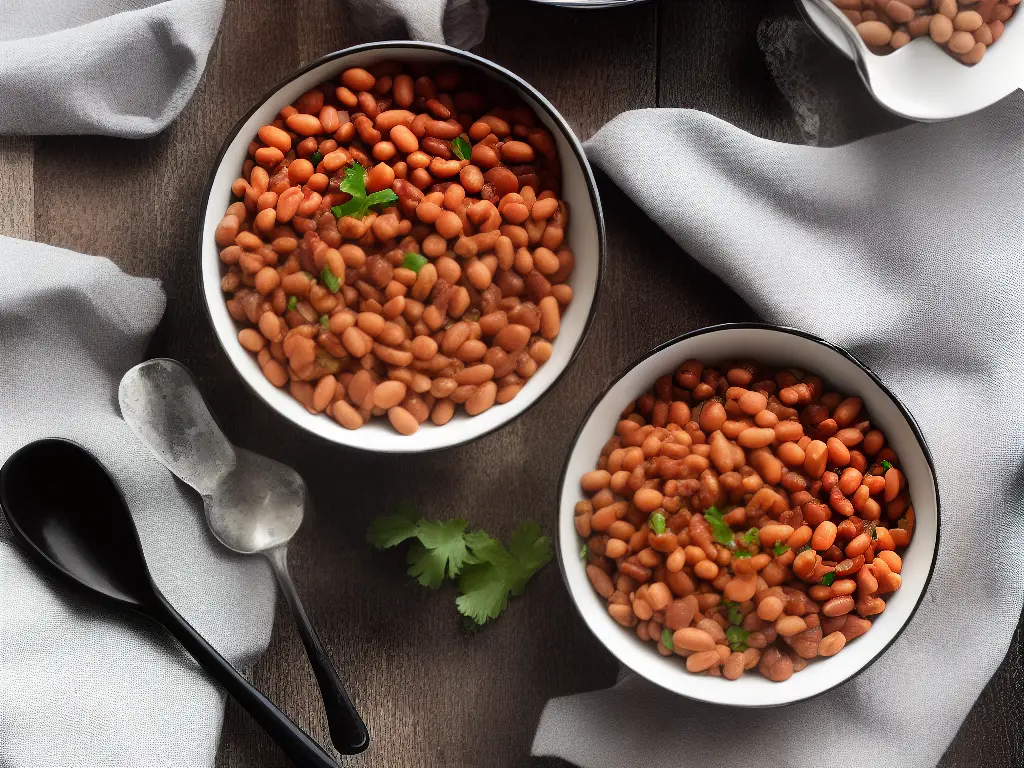Watermelon juice is a refreshing and nutritious beverage that has gained popularity in recent years for its numerous health benefits and delightful flavor. This fruit has an impressive nutritional profile, containing vitamins, minerals, and antioxidants, making it an ideal choice for a healthy drink. This essay delves into the various aspects of watermelon juice, including nutrition, preparation methods, recipes, commercially available options, cultivation practices, and environmental considerations, as well as the health benefits and potential risks associated with consuming this delicious juice.
Watermelon Juice Nutrition
Watermelon juice is a delicious and refreshing beverage that not only quenches your thirst but also provides various health benefits. As a rich source of vitamins, minerals, and antioxidants, watermelon juice supports your overall wellness, making it the perfect addition to your daily routine. A single cup (about 240 grams) of watermelon juice contains just around 71 calories, making it a low-calorie option for those looking to maintain a healthy weight.
One of the primary health benefits of watermelon juice is its high content of vitamins A and C. These vitamins are essential for maintaining healthy skin, hair, and vision, as well as supporting the immune system. A cup of watermelon juice contains about 26% and 28% of the recommended daily values for vitamin A and vitamin C, respectively. Additionally, watermelon juice is a good source of vitamin B6, which is crucial for proper brain function and the synthesis of various neurotransmitters that regulate mood, appetite, and sleep.
Watermelon juice also contains a variety of essential minerals that aid various bodily functions. One such mineral is potassium, which plays a vital role in regulating blood pressure, maintaining fluid balance, and supporting proper muscle and nerve function. A cup of watermelon juice offers about 320 milligrams of potassium, contributing to the recommended daily intake of 2,500-3,000 milligrams for adults. Other essential minerals found in watermelon juice include calcium, magnesium, and phosphorous – all of which contribute to strong bones and teeth, among other benefits.
The antioxidant content of watermelon juice is another key component of its nutritional value. Watermelons contain a unique compound called lycopene, a carotenoid antioxidant responsible for the fruit’s red color and with powerful health benefits. Lycopene has been linked to reduced risk of chronic diseases such as heart disease and certain types of cancers by neutralizing harmful free radicals in the body. In addition to lycopene, watermelon juice also contains antioxidants such as beta-carotene and vitamin C, which further protect the body from oxidative damage and inflammation.
Besides its impressive vitamin, mineral, and antioxidant content, watermelon juice is also known for its hydrating properties. With a water content of approximately 92%, watermelon juice can help you stay hydrated, especially during hot summer days or after intense workouts. Moreover, it contains natural sugars and electrolytes that replenish energy levels and promote optimal function of your muscles and nerves. By incorporating this tasty and nutritious beverage into your diet, you can support your overall health and wellness.
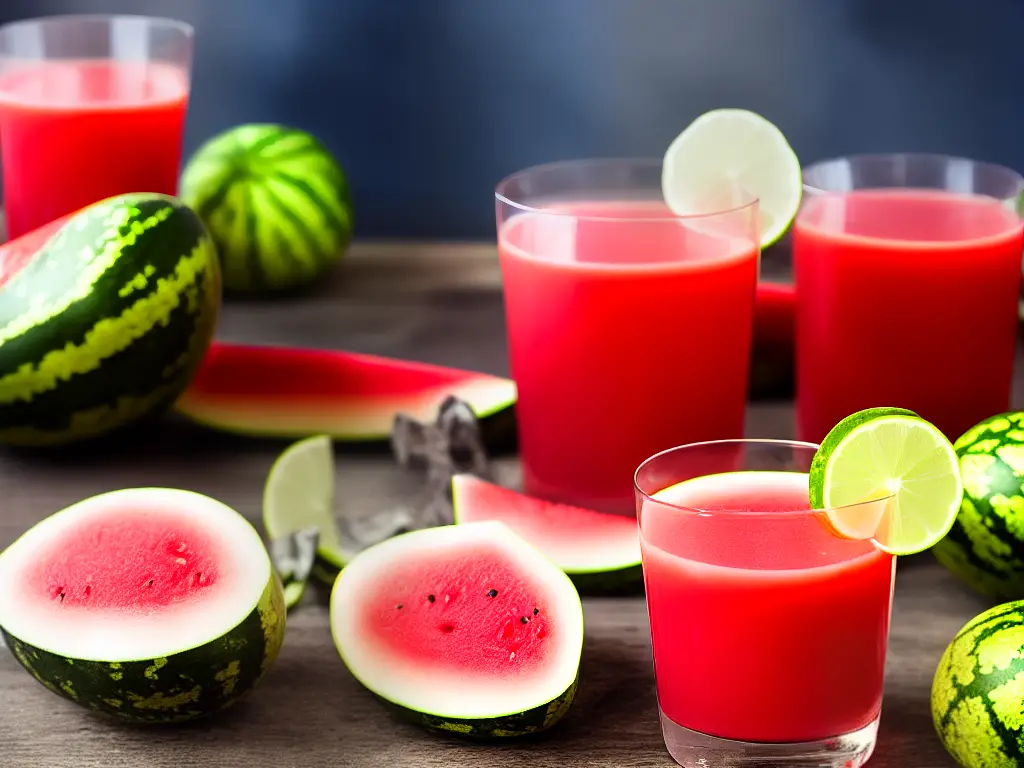
Making Watermelon Juice
Preparing watermelon juice is simple and can be done using a variety of methods, offering a delicious and refreshing addition to your hydration routine. A popular method is using a juicer. To do this, cut the watermelon into chunks, remove the seeds if you are not using a seedless variety, and feed the chunks through a juicer. This technique is efficient as it quickly extracts the maximum amount of juice without the need for straining or blending, allowing you to easily enjoy the benefits of watermelon juice on a regular basis.
Another popular method for making watermelon juice is by using a blender. This process involves roughly chopping the watermelon into small, easy-to-blend pieces, and then placing them in a blender along with a small amount of water. The chunks of watermelon should be well-blended on high speed until the mixture becomes smooth and liquid. After blending, it is recommended to strain the juice through a fine sieve or cheesecloth to remove any remaining pulp or seeds. Depending on preference, the juice can be sweetened with natural sweeteners, such as honey or agave syrup, and the addition of ice cubes can be blended in for a chilled, frothy beverage.
Manual extraction is another option for those who prefer a more hands-on approach to making watermelon juice, or who may not own a juicer or blender. This method involves cutting the watermelon into small, manageable pieces, and then using a fork or potato masher to press and mash the flesh to release the juice. Once the watermelon pieces are fully mashed, the juice can be strained through a fine sieve, cheesecloth, or even a clean dish towel to separate it from the pulp and seeds. This method can require a bit more time and effort, but the result is still a delicious, refreshing juice that can be enjoyed on its own or in a variety of drinks and recipes.
Combinations of the aforementioned methods can also be used to make watermelon juice. For example, a mix of manual extraction and blending can be utilized to create a juice that retains some pulp for added texture and fiber. Alternatively, the watermelon juice can also be flavored with ingredients such as lime or mint leaves to enhance its taste and add a touch of uniqueness to the drink. Whichever method is chosen, it is important to ensure the watermelon is ripe and of good quality to yield the best flavor and most juice possible.
In conclusion, watermelon juice can be prepared using various methods based on personal preferences and the appliances at hand. Whether utilizing a juicer, blender, manual extraction, or a combination of techniques, the end result is a refreshing and delicious beverage that can be enjoyed in numerous ways.
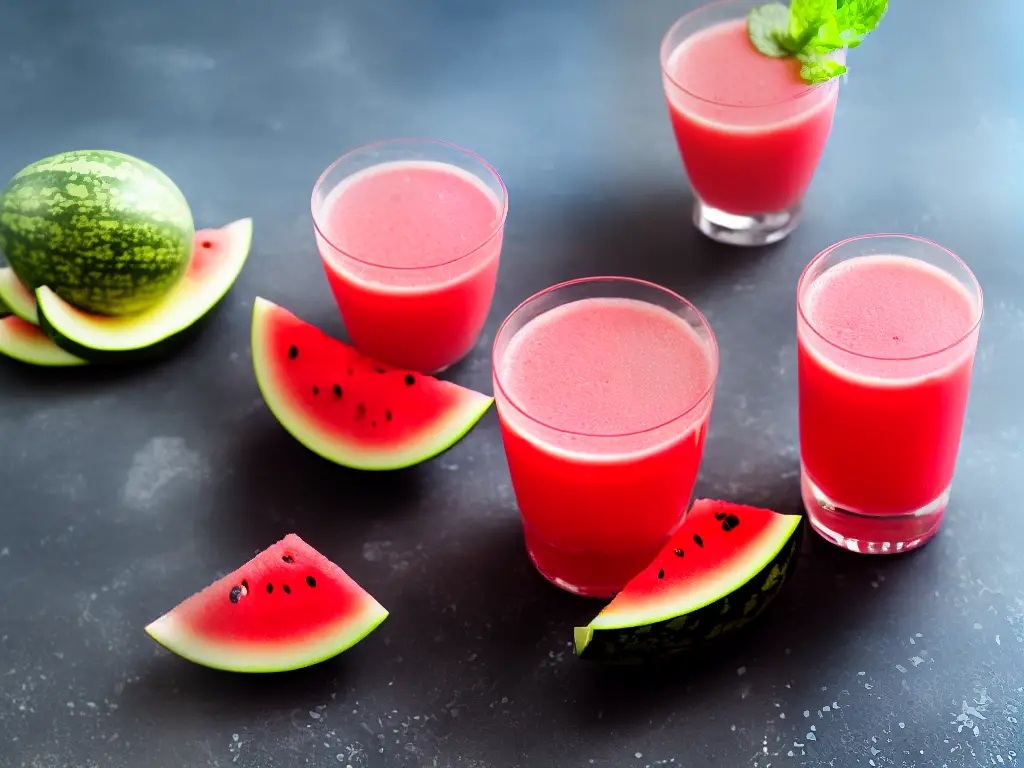
Watermelon Juice Recipes
Not only can watermelon juice be enjoyed on its own, but it can also serve as a base for cocktails, smoothie bowls, and a variety of culinary creations. There are simple recipes to enjoy the natural taste of watermelon, as well as more complex recipes that combine watermelon with various flavors for a truly unique experience. This versatile juice is especially refreshing and healthy during the summer months when the fruit is at its peak.
One of the simplest ways to make watermelon juice is by blending fresh watermelon chunks until smooth and then straining the liquid to remove any seeds and pulp. This can be simply served over ice or mixed with sparkling water for a refreshing spritzer. To add an extra layer of flavor, you could also try adding a squeeze of fresh lime juice or a pinch of salt to balance out the natural sweetness of the watermelon.
For a more complex and unique option, watermelon can be combined with other fruits for delicious and nutritious drinks. Try blending watermelon with other summer fruits like strawberries, raspberries, or peaches for a fruit-packed smoothie. Or, mix it with pineapple and coconut water for a tropical twist. The key is to experiment with different fruit combinations to find your favorite flavors.
For a more grown-up take on watermelon juice, consider turning it into a delicious cocktail. Watermelon pairs well with various spirits, such as vodka, gin, and tequila. One popular option is a watermelon margarita, made by blending fresh watermelon with tequila, lime juice, and a splash of triple sec. Alternatively, try a watermelon mojito by muddling fresh watermelon with mint, lime, and sugar, then topping it with white rum and soda water.
Watermelon juice is not only delicious, but it’s also packed with a plethora of health benefits. As an excellent source of vitamins A and C, as well as antioxidants like lycopene, it helps protect the body from damage caused by free radicals. Moreover, it naturally contains electrolytes, making it ideal for rehydration after a workout or a day in the sun. For a refreshing and wholesome drink option, consider trying one of the many watermelon juice recipes available, or create your own unique blend.
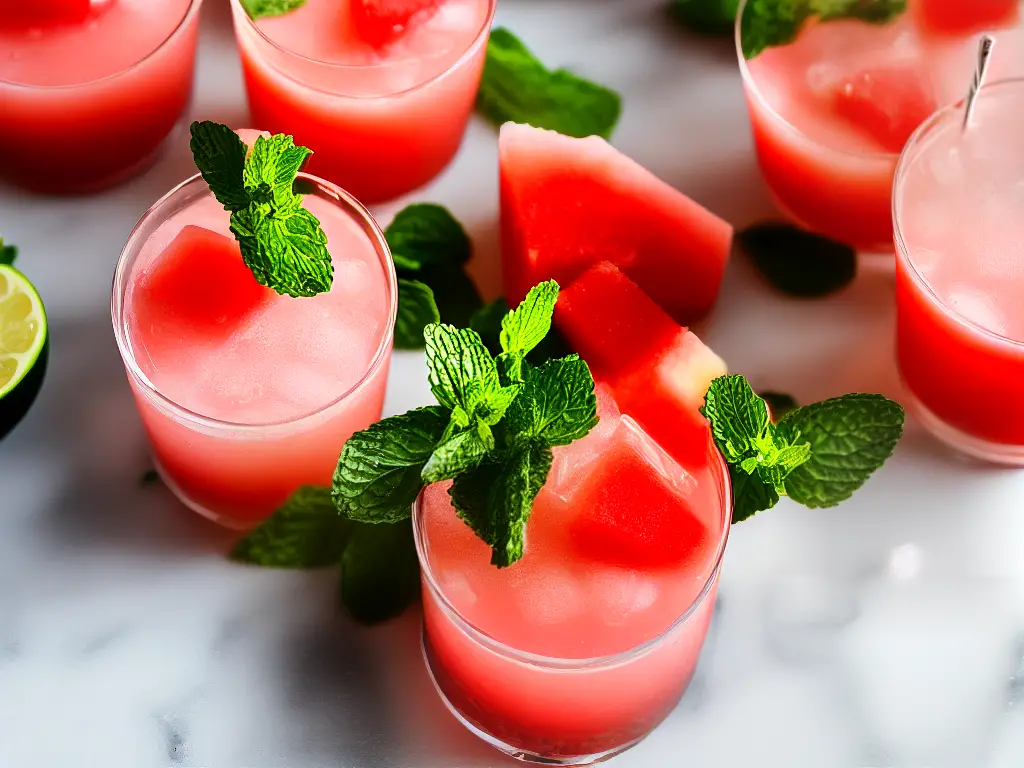
Commercially Available Watermelon Juices
In recent years, watermelon juice has become increasingly popular due to its numerous advantages, such as hydration, rich vitamin and mineral content, and its potential to boost athletic performance. A variety of store-bought watermelon juice brands, including WTRMLN WTR, Tsamma, and 1915 Organic, cater to this growing demand. Each brand possesses its own unique qualities, additives, and processing techniques, ultimately influencing the taste, nutritional value, and overall appeal of their products, giving consumers plenty of options to choose from.
WTRMLN WTR is a prominent watermelon juice brand that sources its watermelons from the United States and uses a cold-pressed extraction method to produce their juice. They utilize any leftover rinds from the watermelon fruit, which is a sustainable practice that dramatically reduces food wastage. One key feature of WTRMLN WTR’s processing method is that it excludes artificial sweeteners, preservatives, and concentrates, allowing for a more natural and healthy product. The ingredients list of their watermelon juice typically includes watermelon flesh, watermelon rind, and organic lemon juice.
Another popular watermelon juice brand, Tsamma, also prides itself on sourcing its watermelons locally within the United States. The brand offers juices in both pure watermelon and blended varieties, with combinations such as watermelon and coconut water, or watermelon with the blueberry flavor. Tsamma’s processing methods retain the natural nutritional benefits of the watermelon fruit, ensuring that their juices are high in electrolytes, antioxidants, and essential amino acids. Tsamma watermelon juices are free from added sugars, artificial preservatives, and colors, providing consumers with a refreshing and nutritious option.
1915 Organic, a brand by Bolthouse Farms, produces a watermelon juice that is a blend of organic watermelon, organic apple, and organic lemon juice. This unique combination provides an exciting flavor profile and additional nutritional benefits. The brand is committed to using non-GMO ingredients, contains no artificial additives, and their processing methods involve cold-pressing to retain its natural goodness. The addition of apple and lemon to the watermelon juice helps balance the sweetness and acidity, making it a delightful thirst quencher.
When it comes to selecting a watermelon juice brand, it is crucial for consumers to verify the product labels and examine the ingredients list to ensure that they are consuming a juice that aligns with their dietary preferences and health goals. Understanding the differences in additives, flavors, and processing methods between various watermelon juice brands will help individuals make educated choices when purchasing a refreshing and nutrient-packed beverage. Despite the variations between brands, a common factor that they all share is their dedication to producing high-quality and healthy watermelon juices.
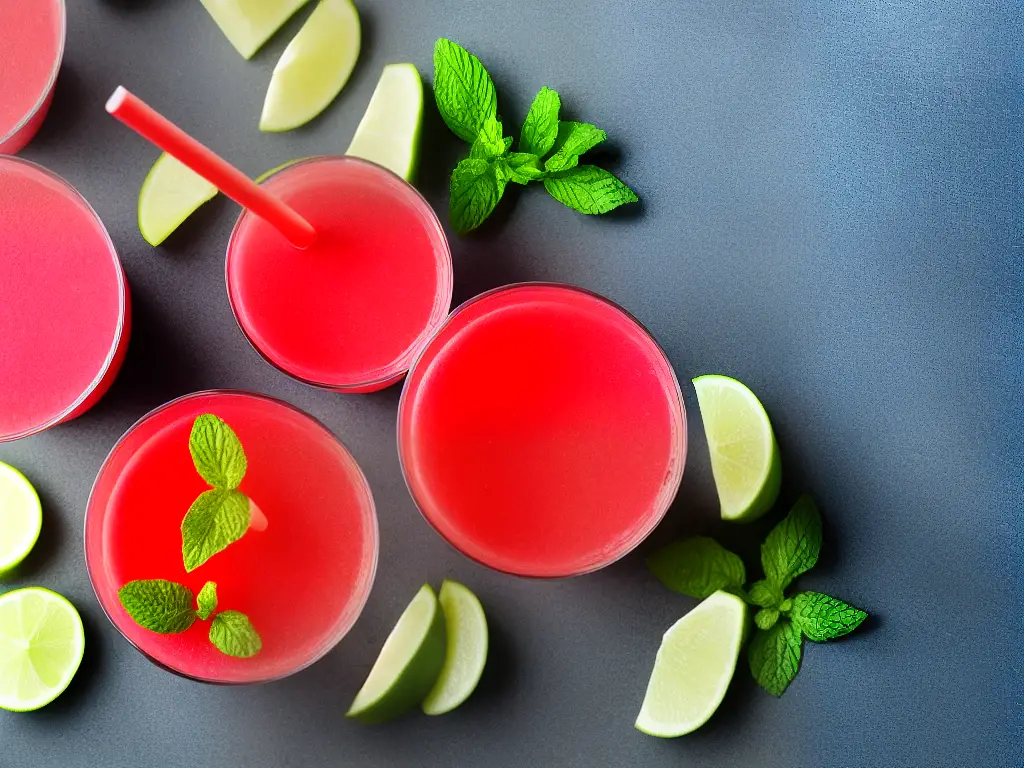
Watermelon Cultivation and Selection
To achieve this, the cultivation and selection process of watermelons, scientifically known as Citrullus lanatus, becomes crucial in ensuring the best quality juice. Watermelon is a popular summertime fruit and a rich source of vitamins A, B6, C, and essential minerals. By using high-quality watermelons as the primary ingredient, the watermelon juice not only has a refreshing taste but also offers numerous nutritional benefits to consumers.
Watermelons are usually grown in warm climates, with an average temperature range of 70 to 80 degrees Fahrenheit, and they require approximately 80 days to reach maturity. The cultivation process involves preparing the soil, planting the seeds, and providing proper care in terms of irrigation and nutrition.
Soil Preparation and Planting
To ensure the healthy growth of watermelons, the soil must be well-drained and have a pH between 6 and 6.8. Sandy loam soil is considered ideal for watermelon cultivation. Before planting seeds, farmers should prepare the soil by adding organic matter such as compost or aged manure, and ensuring proper aeration. Once the seedlings are big enough, they are typically transplanted into the field, with each plant spaced approximately 60 to 72 inches apart. Watermelons require regular watering, especially during flowering and fruit development stages. The use of drip irrigation systems is common to minimize water wastage and prevent diseases caused by excessive moisture.
Choosing the Right Variety of Watermelon
Choosing the right variety of watermelon for juice production is important, as certain varieties are more suitable for this purpose. For example, seedless watermelons are often preferred due to their higher juice content and easy-to-process nature. Some popular seedless watermelon varieties include ‘Crimson Sweet,’ ‘Millionaire,’ and ‘Trio.’ When selecting watermelons for juice production, factors like sugar content, texture, and overall quality must be considered to ensure a flavorful and nutritious end product.
Selecting Ripe Watermelons
Selecting ripe watermelons at the peak of their maturity is crucial to producing high-quality juice. Several indicators can be used to determine the ripeness of a watermelon. One common method is to look for a cream-colored or yellowish spot on the watermelon’s bottom, also known as the ground spot. This is where the fruit comes into contact with the ground during the ripening process. A ripe watermelon will also produce a deep, hollow sound when tapped gently. The fruit’s texture should be smooth and firm, with no bumps or dents.
Modern Technology and Watermelon Cultivation
Modern technology has greatly influenced the cultivation and selection process of watermelons. For example, non-destructive techniques such as near-infrared spectroscopy (NIRS) are used to determine the sugar content and overall ripeness of watermelons without causing any harm to the fruit. Moreover, researchers are studying the genetics of watermelons to develop new varieties that are more resistant to diseases, have a higher yield, and a higher juice content. Improvements in watermelon quality benefit both the consumers and the environment by reducing the need for pesticides and increasing overall crop efficiency.
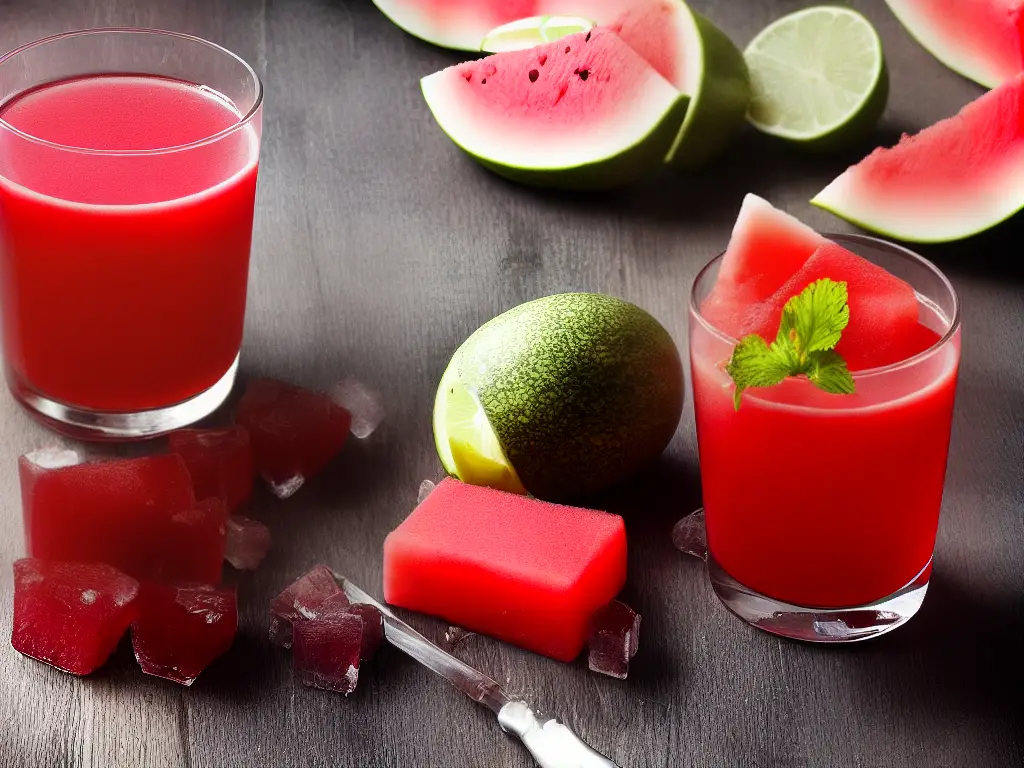
Environmental Impact
Despite these advancements, it is important to consider the environmental impacts of watermelon production, like any other agricultural activity. One major concern is the use of water in watermelon farming, as this juicy fruit is composed of about 90% water and requires a significant amount of water for growth. Studies have shown that watermelon farming can lead to the depletion of water resources, particularly in water-scarce regions. In addition, chemical fertilizers and pesticides used in watermelon cultivation contribute to water pollution, and have negative consequences on biodiversity and soil health. Therefore, while modern technology enhances watermelon cultivation, it is crucial to address the environmental challenges associated with its production.
One way to minimize the environmental impact of watermelon farming is by adopting sustainable agricultural practices. Drip irrigation systems can help farmers efficiently water their watermelon crops with minimal water waste, ensuring that the water supply is not depleted. Additionally, the use of organic fertilizers and the practice of integrated pest management can reduce the need for chemical interventions, thereby reducing pollution and preserving soil health.
When it comes to consuming watermelon juice, there are several actions individuals can take to minimize their personal carbon footprint. Purchasing locally-grown produce, when available, can significantly reduce the transportation emissions associated with the watermelon’s journey from farm to table. Buying watermelons from local farmers’ markets or directly from the farm also helps support small-scale farmers who may be more likely to practice environmentally-friendly farming techniques.
In addition to sourcing watermelon juice responsibly, consumers can take steps in their own homes to reduce the environmental impact of their consumption. Using a juicer instead of buying pre-packaged juice can significantly cut down on packaging waste, and using reusable water bottles or glasses for your juice can help reduce single-use plastic waste. Composting the leftover watermelon rinds and pulp is another great way to minimize waste and return valuable nutrients to the soil.
Watermelon juice is highly valued for its hydrating properties, as it is composed of over 90% water. This makes it an excellent refresher during hot summer days, as well as an ideal post-workout drink, assisting in efficient muscle recovery. Apart from keeping the body hydrated, watermelon juice is a good source of essential vitamins and minerals, such as vitamin A, vitamin C, and potassium. These nutrients play significant roles in maintaining the overall health of various body systems, including the immune system, vision, and heart function.
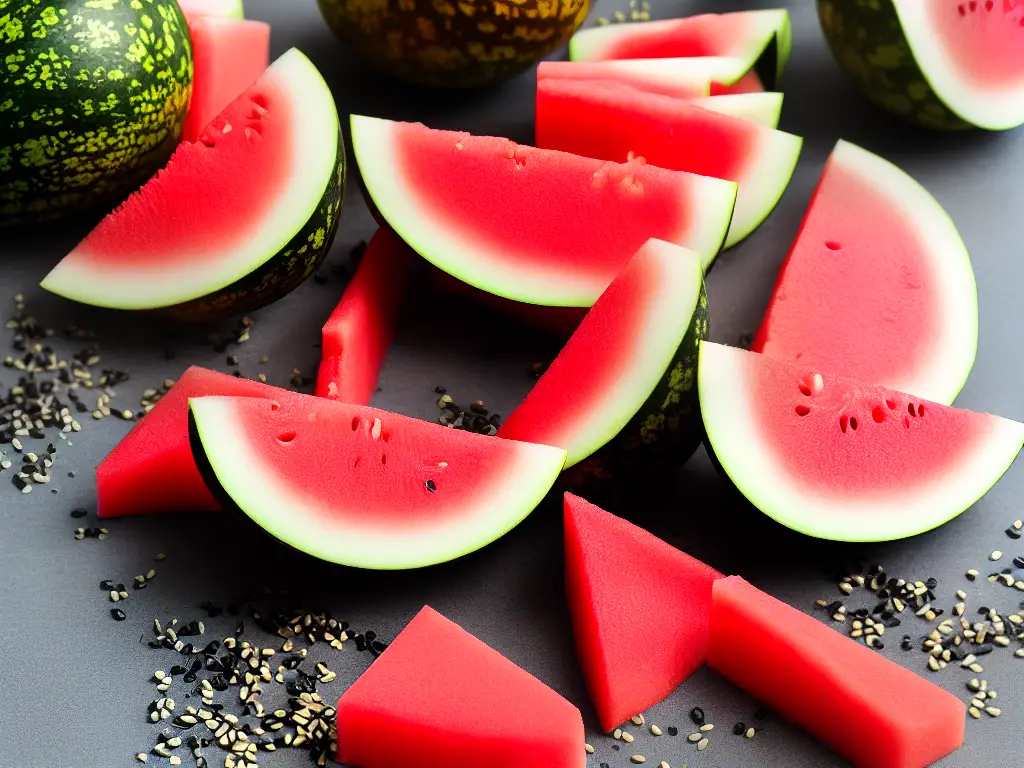
Health Benefits and Risks
However, it’s equally important to consider the environmental impact of watermelon juice consumption. Supporting policies and programs that encourage sustainable farming practices, invest in research and development of innovative technologies, and provide financial incentives for eco-friendly initiatives can help make the production and consumption of watermelon juice more environmentally friendly for everyone. By purchasing locally-grown watermelons, adopting more sustainable practices in our own homes, and advocating for changes within the industry, we can all help reduce the environmental impact of watermelon juice consumption.
Another key health benefit of watermelon juice is its potential to regulate blood pressure. A particular amino acid called L-citrulline found in watermelon helps to improve blood flow, by relaxing and dilating blood vessels through the production of nitric oxide. Several studies have suggested that regular consumption of watermelon juice may help in reducing hypertension, consequently lowering the risk of heart diseases and stroke. Moreover, the presence of antioxidants, such as lycopene and vitamin C, in watermelon juice can further contribute to cardiovascular health by reducing oxidative stress that can damage blood vessels and other tissues.
Despite its potential health benefits, consumption of watermelon juice may pose some risks for certain populations. One such group includes individuals with diabetes, since watermelon has a high glycemic index, which can cause rapid increase in blood sugar levels. While moderate consumption of watermelon juice, combined with a balanced diet, may not be harmful for most, diabetic individuals should consult their healthcare provider before incorporating it into their regular diet.
Another population that should be cautious about consuming watermelon juice are those with kidney disorders. The high potassium content in watermelon can be detrimental for people with impaired kidney function, as their bodies may be unable to process and eliminate excess potassium properly. High potassium levels in the bloodstream can lead to hyperkalemia, a condition with potentially serious consequences, such as disrupted heart rhythms and even sudden cardiac arrest.
Lastly, it is worth mentioning that watermelon is a known allergen for some people, and its consumption may trigger symptoms, such as itching, swelling, and hives. Those who have a known allergy to watermelon or other members of the Cucurbitaceae family should avoid consuming watermelon juice. If you suspect an allergy but are unsure, it is best to consult with a healthcare professional before incorporating watermelon juice into your diet.
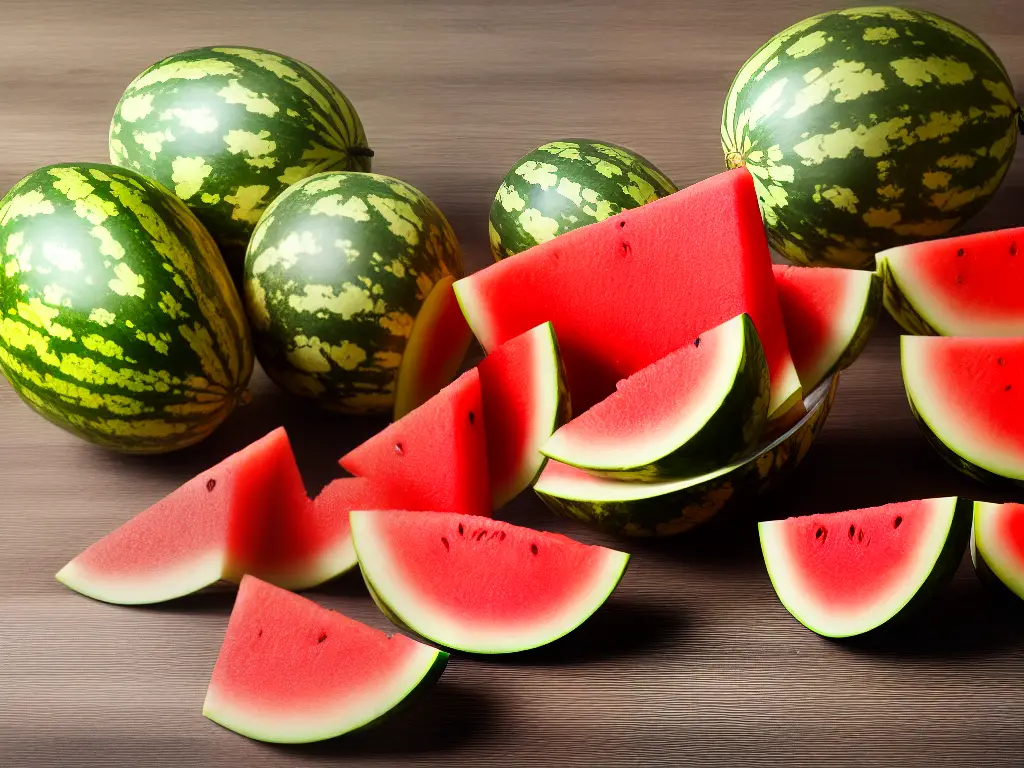
Throughout this essay, the numerous facets of watermelon juice have been addressed, demonstrating just how versatile and beneficial this fruity beverage can be. By understanding the nutrition, preparation techniques, recipes, commercial options, cultivation methods, and environmental impact, we can make informed decisions about incorporating watermelon juice into our daily lives. Considering the potential health benefits, such as hydration and blood pressure regulation, while being aware of possible risks, allows us to savor this refreshing drink with confidence and appreciation, enjoying every last sip of its sweet, thirst-quenching goodness.
